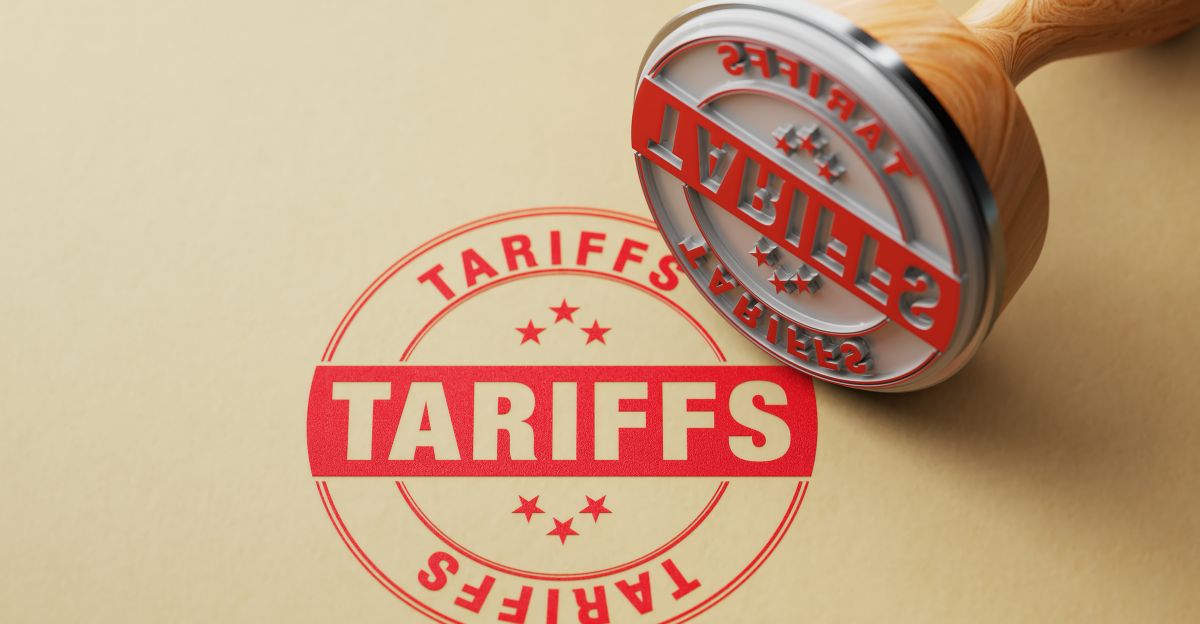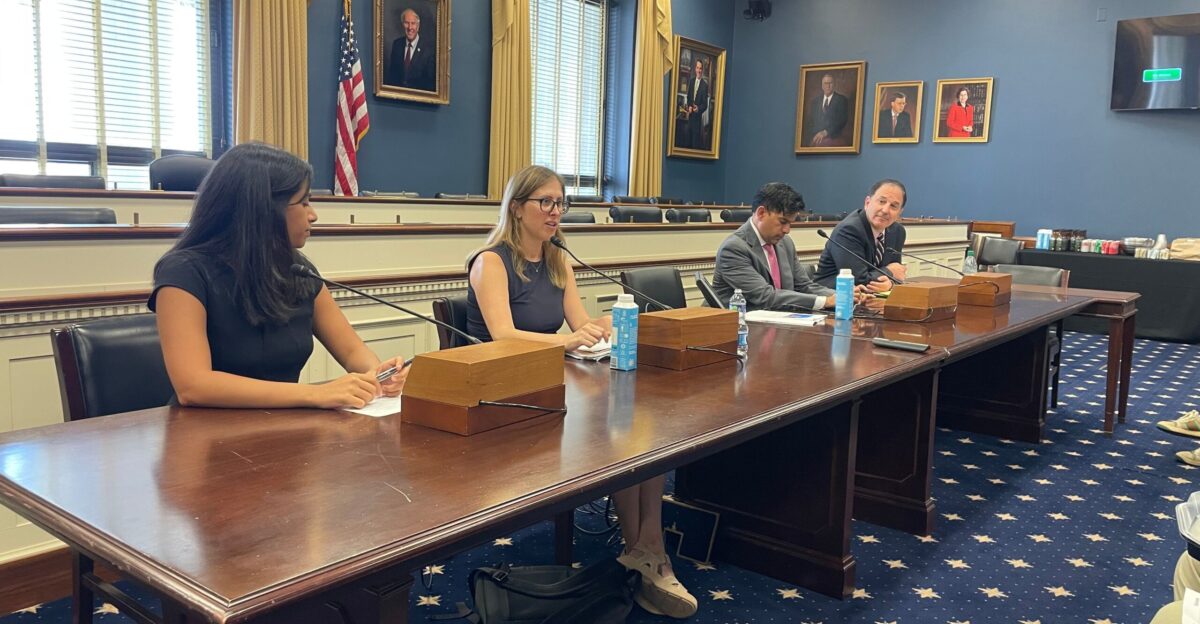
In July 2025, a high-profile lawsuit sent shockwaves through the e-commerce world. The Trump Organization filed a federal complaint targeting thousands of sellers accused of distributing counterfeit Trump merchandise across major platforms like Amazon and eBay. Legal experts noted that the lawsuit significantly changed U.S. trademark enforcement tactics, as it leveraged “Schedule A” litigation to freeze assets and impose temporary restraining orders swiftly.
“This could reshape how brands protect their trademarks online,” remarked intellectual property attorney Lisa Reynolds. As the implications became evident, sellers were on edge, understanding that the stakes had drastically risen.
Market in Crisis

The landscape grew increasingly tense for Chinese third-party sellers, who comprised 57% of Amazon’s market share. By mid-2025, they faced significant backlash as new penalties, lawsuits, and tariffs converged. Reports indicated that revenue for impacted Chinese merchants declined by 33% in just three months, resulting in significant losses across the sector.
“I’ve never seen anything like this before; it feels like we’re being targeted,” lamented a seller from Shenzhen. The upheaval highlighted the precariousness of the marketplace and the vulnerability of many small businesses dependent on these sales for survival.
E-Commerce Evolution

Online marketplaces have seen unprecedented growth since 2015, mainly driven by Chinese entrepreneurs. Platforms such as Amazon, eBay, and DHgate became indispensable, facilitating the rise of cross-border e-commerce shipments, which soared from 134 million packages annually to over 1.36 billion.
“It has transformed how we do business,” stated a logistics manager involved in the boom. This evolution showcased the growing prowess of Chinese sellers in the global market. However, it also laid the groundwork for tensions tied to regulatory changes and enforcement actions that were about to reshape the e-commerce environment significantly.
Growing Regulatory Scrutiny

Amidst rising concerns over counterfeit goods and manipulated reviews, Amazon took decisive steps, blocking 99% of suspicious listings and freezing over $20 million in suspected illicit earnings. With new regulations on the horizon, U.S. policymakers scrutinized loopholes that allowed inexpensive Chinese packages to bypass tariffs.
“It’s a wake-up call for sellers,” commented regulatory analyst John Simmons. This move towards a more stringent compliance landscape led many sellers to rethink their strategies, knowing that failure to adapt could have dire consequences for their businesses.
The Lawsuit That Changed It All

On July 25, 2025, all eyes turned to Florida as the Trump Organization filed a sweeping federal lawsuit against sellers of allegedly counterfeit Trump merchandise. Utilizing “Schedule A” litigation, the suit aimed at freezing assets and sought temporary restraining orders against sellers across platforms, including Amazon, eBay, Walmart, AliExpress, and DHgate.
Legal observers viewed this as a drastic escalation of trademark enforcement practices. “It’s a game-changer, and it might set a dangerous precedent,” warned legal expert Sarah Fackrell. This pivotal action marked a turning point, igniting anxiety among sellers who suddenly found themselves vulnerable to aggressive legal scrutiny.
Regional Fallout

The impact of the Trump Organization’s lawsuit rippled out, especially in the Southern U.S., where many regional sellers operated primarily on Amazon and eBay. Immediately following the legal action, reports indicated a wave of mass account suspensions, leaving many local entrepreneurs in dire straits.
“I never expected to wake up and find my account gone,” shared a Georgia-based seller. Local chambers of commerce raised alarms about the potential long-term repercussions for small businesses. They warned that swift regulatory actions could lead to significant financial losses and a downturn in local economies heavily reliant on e-commerce.
Personal Stories of Fear and Loss

The anxiety intensified as stories emerged from sellers impacted by the abrupt account freezes. “I woke up, and my PayPal account was frozen without any notice,” a Florida seller recounted the sentiments of thousands grappling with similar situations. The chaos rendered countless sellers unsure of their financial futures.
Echoing this sentiment, Melissa Chan, a small business owner relying on e-commerce, shared, “We’ve built our lives around these platforms; it feels like a door is closing.” The human element of this crisis became evident as uncertainty loomed over thousands struggling to navigate this new reality.
Competitors Experience a Downturn

In the backdrop of these changes, competitors such as Temu and Shein faced steep declines in daily active users, reflecting the broader anxiety in the e-commerce landscape. Temu reported a staggering 51% drop in user engagement, while Shein saw a 12% decline. “This is a tough environment for all of us,” commented a marketing manager at Shein.
Amid the regulatory upheaval, manufacturing hubs in Vietnam and India began experiencing a surge in inquiries from Chinese sellers eager to circumvent the escalating U.S. tariffs. “It’s incredible how fast the dynamics can change,” noted supply chain analyst Wei Chen.
The shifting compliance landscape forced many retailers to reassess their sourcing strategies, leading some to temporarily retreat from the U.S. market in search of stability amidst the chaos. The ongoing regulatory reforms presented unexpected hurdles for the larger e-commerce ecosystems.
Supply Chain Turmoil

Businesses scrambled to realign their supply chains, seeking innovative ways to maintain profit margins while navigating a newly hostile trade environment. As traditional routes became more fraught with challenges, these adjustments underscored the fragility and volatility of global commerce in the face of significant policy changes.
The Tariff Tsunami Unleashed

On May 2, 2025, a monumental policy shift occurred when the U.S. government eliminated the $800 de minimis exemption for Chinese packages. This policy change imposed 30% to 145% tariffs on shipments from China and Hong Kong, affecting a staggering 1.36 billion annual packages. Industry insiders predicted this “tariff tsunami” would raise consumer prices and strain profit margins.
Small business owner Mark Johnson articulated the concern: “This isn’t just a hit to us; it’s going to impact every level of the supply chain.” As the fallout began, buyers and sellers braced themselves for the consequences.
Rising Frustration Among Sellers

As the pace and severity of enforcement increased, frustration among affected sellers grew palpable. “There’s a serious concern about due process here; many are being railroaded,” said Sarah Fackrell, an intellectual property law professor.
Sellers feared that the swift action taken without adequate notice or opportunity for defense could devastate their livelihoods. “We’re not criminals; we’re just trying to make a living,” lamented a Texas seller, highlighting the emotional toll of the rapid legal maneuvers that left many powerless.
Legal Power Shift

The Trump Organization’s litigation approach signifies a growing trend towards aggressive private-sector legal activism. Utilizing the Schedule A litigation strategy, the organization obtained court orders requiring e-commerce giants to block products and freeze seller accounts before traditional due process protections were enacted.
“It’s a double-edged sword,” warned legal analyst Thomas Lee. While this could enhance trademark protection, it raises serious questions about fairness and sellers’ rights in the digital marketplace, setting a precedent for future enforcement practices that could fundamentally alter the e-commerce landscape.
Resistance from Sellers

In response to the shifting tides, Chinese sellers facing account freezes and unexpected tariff bills banded together to form advocacy groups. “United, we can better navigate these challenges,” commented Zhang Wei, a seller from Guangzhou. Many sought reforms within the e-commerce platforms to protect their rights and livelihoods.
Additionally, some sellers initiated cross-border e-commerce alliances, striving for mutual aid and legal defense funds to help withstand the pressures. This emerging solidarity among sellers suggests a growing recognition that collective action may be necessary to advocate for fair treatment amidst volatile market conditions.
The Human Cost of Compliance

As compliance measures tightened, anecdotal reports from affected sellers illuminated the real-world consequences of these regulatory shifts. “Every sale I made was under scrutiny; it felt like a tightrope walk,” explained a California-based e-commerce seller.
The pressure of potential penalties and loss of revenue translated into heightened stress levels for many small entrepreneurs. Analysts noted that the emotional toll on sellers could lead to significant mental health concerns in an already strained industry. These personal stories added a human dimension to the regulatory landscape, revealing the fragility of livelihoods caught in the wave of legal and legislative actions.
The Impact on Consumers

Amid growing regulatory scrutiny and enforcement, consumers also began to feel the effects. With increased tariffs driving up prices, many buyers experienced higher costs for everyday items. “I just wanted to buy something simple, and the prices have skyrocketed,” expressed a frustrated shopper. Supply chain disruptions further complicated the situation, causing delays in product availability.
Experts warned that the cascading effects of these regulatory changes could ultimately reshape purchasing habits and consumer trust in e-commerce platforms. The shifts affected sellers and resonated throughout the supply chain, creating widespread uncertainty.
Widespread Calls for Change

After these rapid changes, calls for reform echoed across the e-commerce community. Sellers, analysts, and advocates pleaded for more balanced regulations protecting consumers and entrepreneurs. “The system needs to support small businesses, not just punish them,” stated market economist Laura Martinez.
The overwhelming sentiment among stakeholders called for more transparent processes and practical support for those affected. This push for reform hinted at a potential shift in the regulatory landscape, as voices from various sectors began to advocate for a more equitable future for e-commerce.
Shifting Alliances in E-Commerce

As the regulatory landscape evolved, alliances within the e-commerce ecosystem began to shift. Sellers increasingly sought relationships with platforms that offered more favorable terms or support in navigating compliance challenges. “We need partners who understand our struggles,” stated a seller from New York.
The emergence of alternative marketplaces presented sellers with new opportunities, albeit with a measure of risk. The collective search for stability led to new collaborations, demonstrating resilience within the community as sellers adapted to an ever-changing environment, working to safeguard their businesses amidst swirling uncertainty.
The Rise of Advocacy Groups

With the mounting pressure from regulatory changes and heightened scrutiny, advocacy groups gained traction among sellers. Many organized rallies and campaigns to raise awareness about their plight, uniting voices in a powerful call for fairness. “We’re here to show that our rights matter,” shared a representative from one advocacy group.
These initiatives aimed to highlight small businesses’ challenges, fostering dialogue with policymakers that could potentially inform future legislation. As the landscape transformed, the surge in activism underscored a commitment to collective action and advocacy for the rights of all sellers in the e-commerce arena.
Looking Forward

As uncertainties loom over e-commerce, sellers remain cautiously optimistic about the future. Many are seeking ways to innovate their businesses, diversifying product offerings to mitigate risks associated with regulatory pressures. “We’ve learned to adapt; innovation is key,” remarked a seasoned entrepreneur. Analysts predict the emergence of new business models that can withstand regulatory shocks while meeting consumer demands.
Yet, beneath this optimism lies an underlying anxiety about impending legal actions and compliance challenges, creating a landscape fraught with complexities as stakeholders navigate an increasingly unpredictable market.
Navigating a New Normal

In the evolving world of e-commerce, sellers are learning to navigate a new normal characterized by increased oversight and regulatory pressures. With a heightened focus on compliance, many businesses are forced to adopt new strategies. “Adapting is essential; we either evolve or risk being left behind,” stated an experienced seller trying to harness innovative approaches.
The push for reform and solidarity among sellers demonstrates a collective resilience amidst turmoil. The future of e-commerce hinges on balancing consumer protections with entrepreneurial freedoms, suggesting a crucial period of negotiation and adaptation is just beginning.